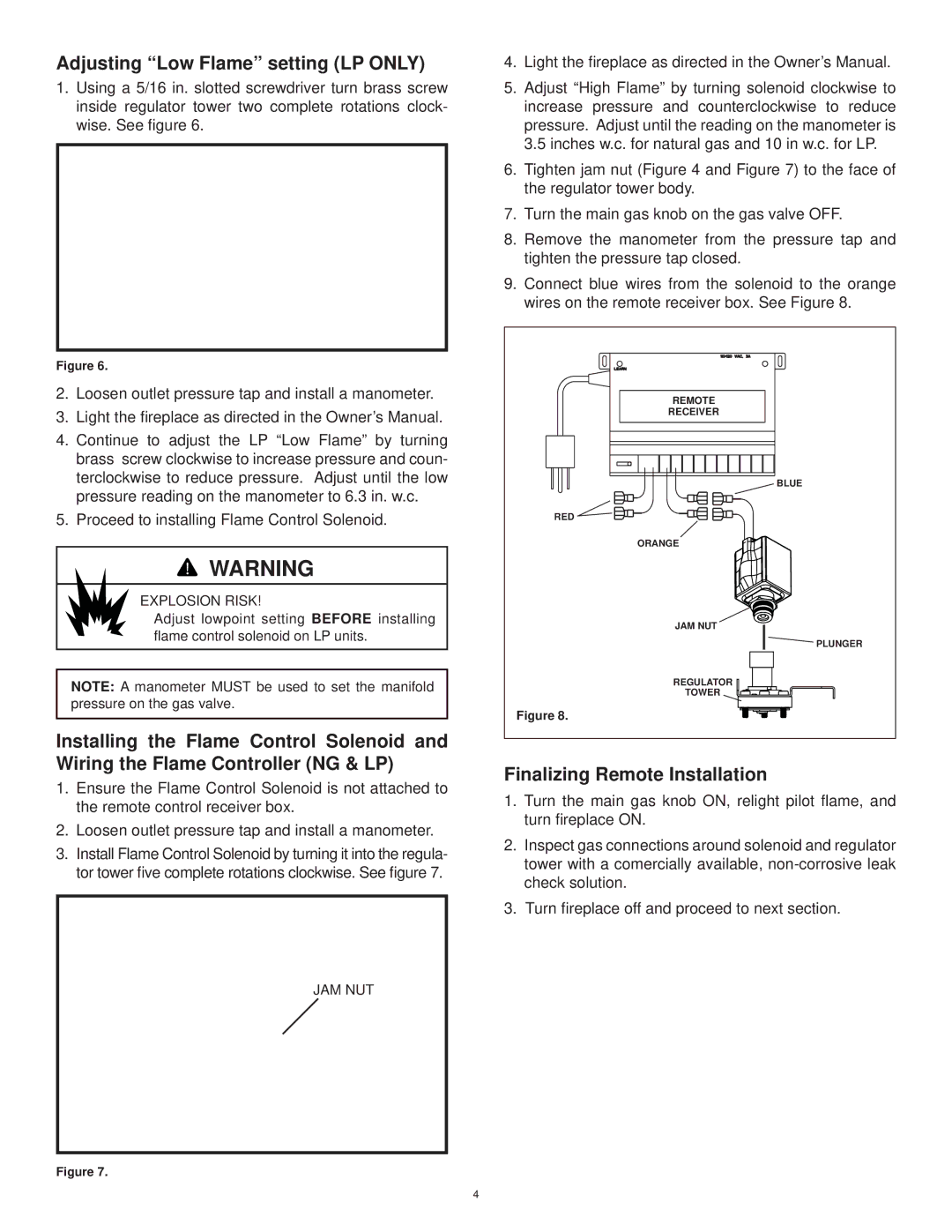RCTS-MLT specifications
Hearth and Home Technologies has established itself as a leader in the home heating and comfort industry, and their RCTS-MLT model exemplifies this commitment through its innovative features and advanced technology. Designed for both functionality and aesthetic appeal, the RCTS-MLT is a radiant catalytic technology stove that offers warmth while accentuating the decor of any space.One of the standout features of the RCTS-MLT is its radiant heating capability. This technology allows for an efficient and even distribution of heat throughout the room, ensuring that every corner is warm and inviting. The catalytic combustion process significantly reduces emissions, making the stove an environmentally friendly choice for homeowners seeking sustainable heating solutions.
Aesthetically, the RCTS-MLT is designed with elegance in mind. Its contemporary styling and multiple finish options ensure that it can seamlessly fit into various interior designs, whether traditional, modern, or rustic. The large glass window provides an unobstructed view of the flames, creating a cozy ambiance in any living space. Additionally, the adjustable airflow control allows users to customize their heating experience, optimizing comfort while maintaining efficiency.
The RCTS-MLT is also equipped with user-friendly features that enhance the overall experience. The remote control capability enables users to adjust settings from a distance, adding convenience to the operation. With a built-in thermostat, the stove can automatically regulate the temperature, providing consistent warmth without the need for manual adjustments.
Durability and reliability are at the core of the RCTS-MLT’s design. Constructed from high-quality materials, the stove is built to withstand the rigors of regular use while maintaining its performance. It is also designed for easy cleaning and maintenance, ensuring that it remains in optimal condition for years to come.
In summary, the Hearth and Home Technologies RCTS-MLT stands out in the home heating market due to its combination of radiant catalytic technology, stylish design, user-friendly features, and durability. It presents an exceptional choice for those looking to enhance their home’s comfort and aesthetic while being mindful of environmental impacts. Whether you are heating a living room, a den, or a spacious open area, the RCTS-MLT delivers an exceptional heating experience that balances efficiency with elegance.

